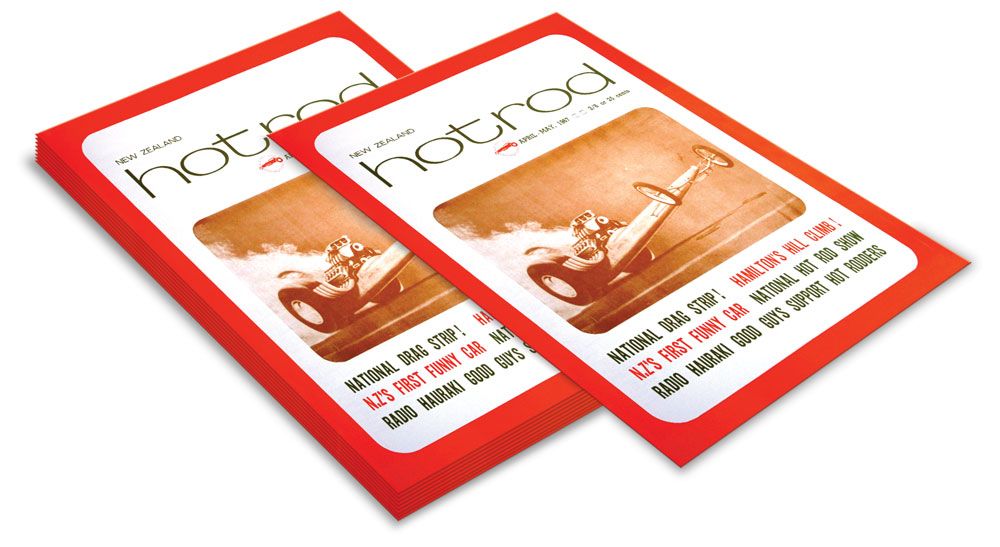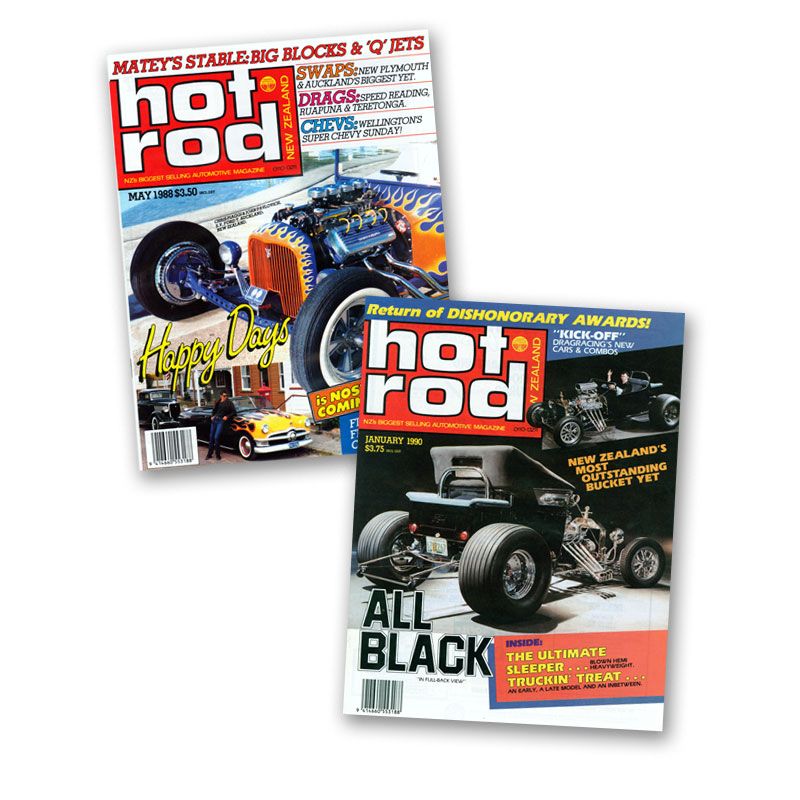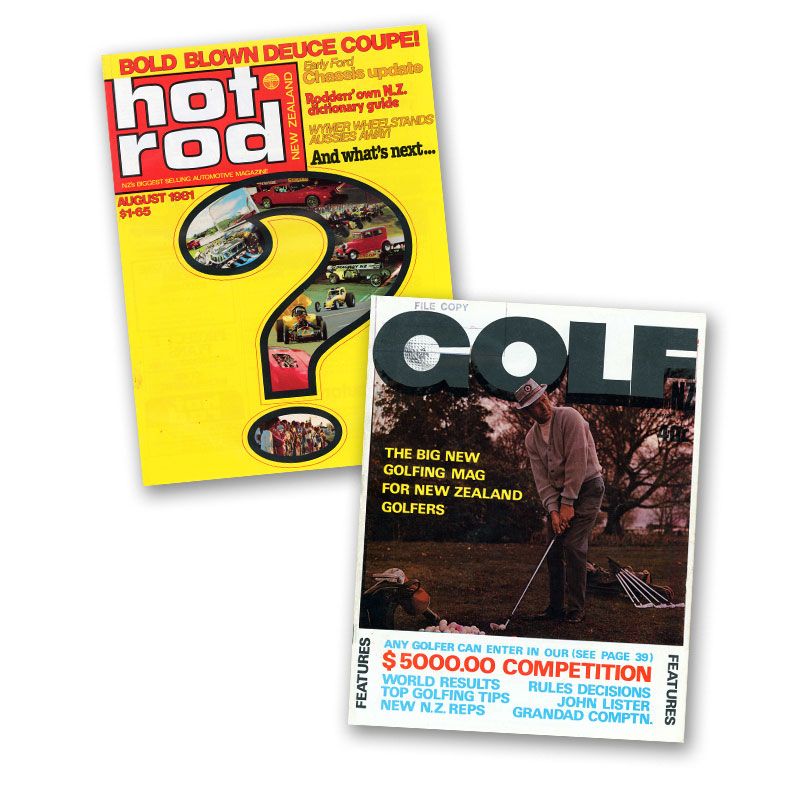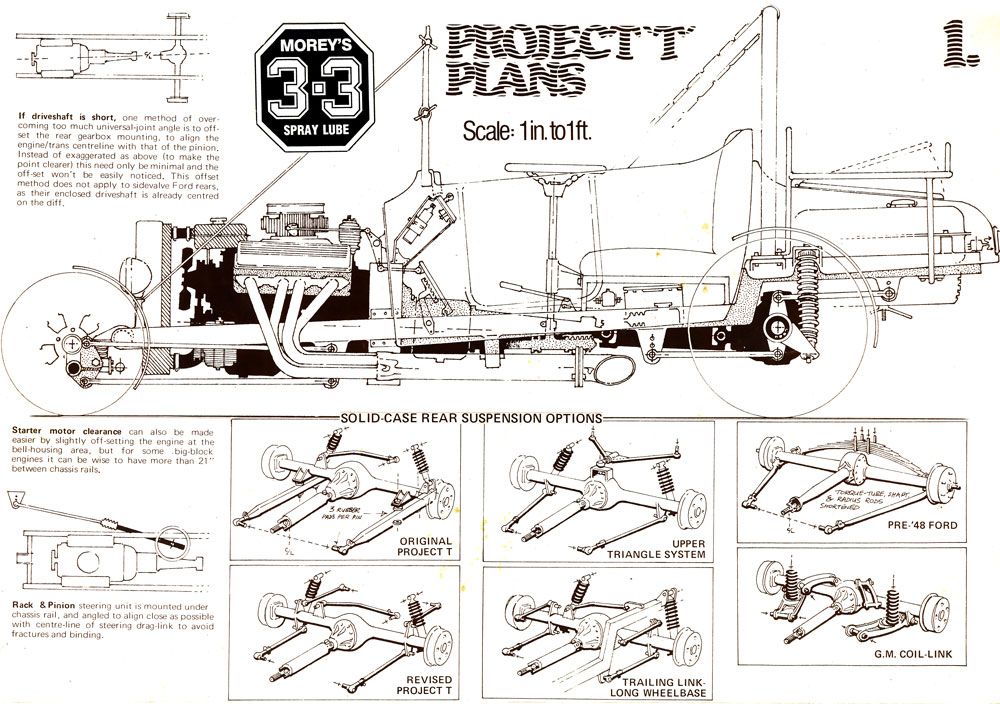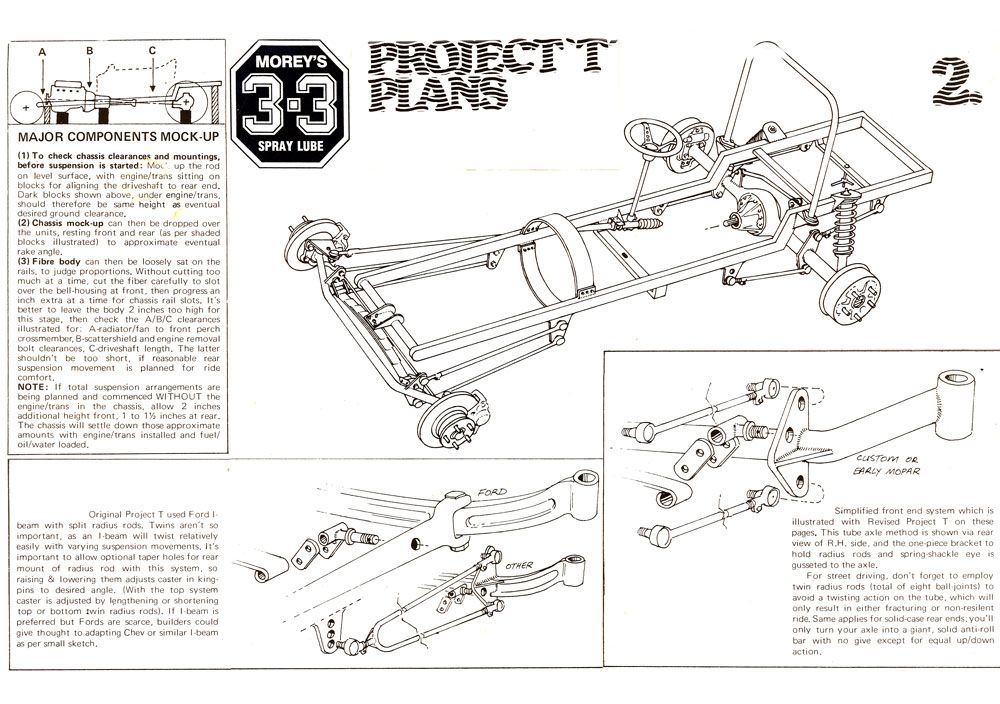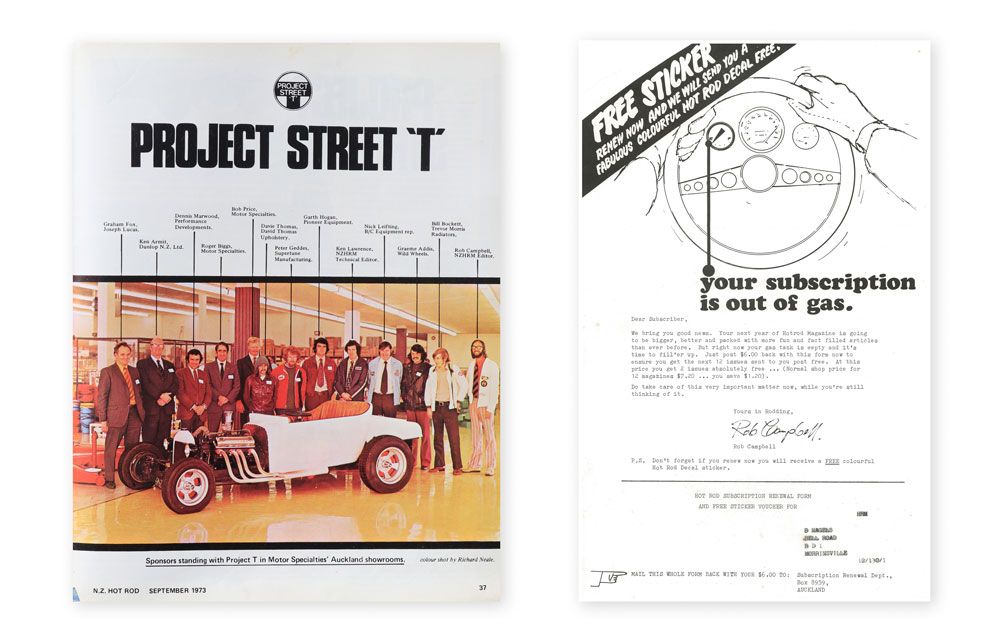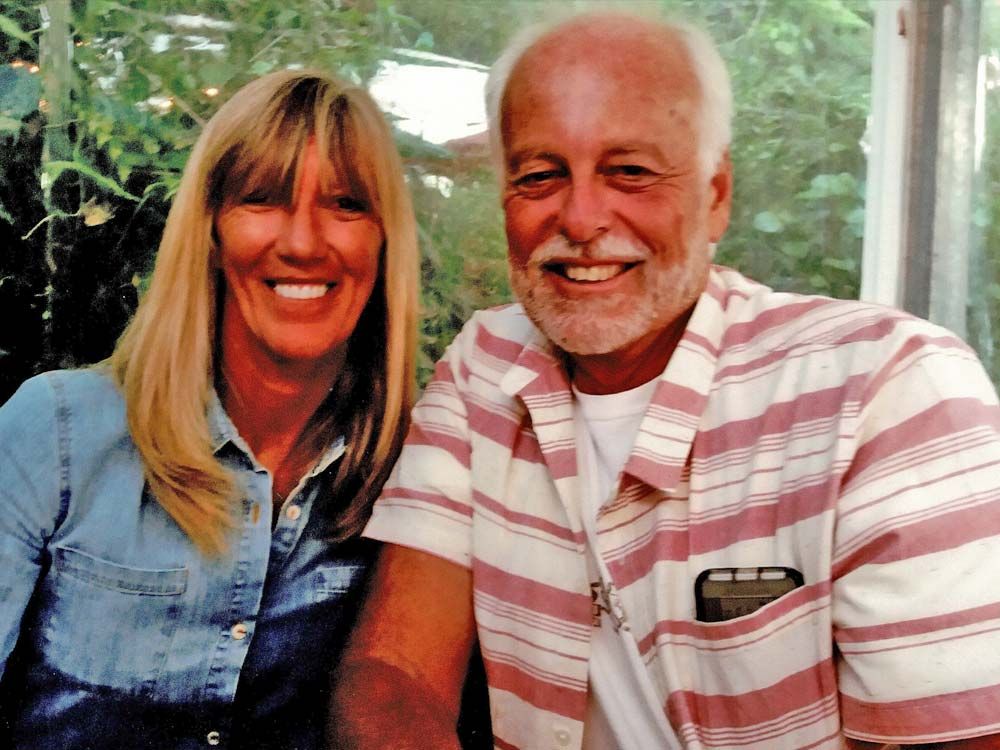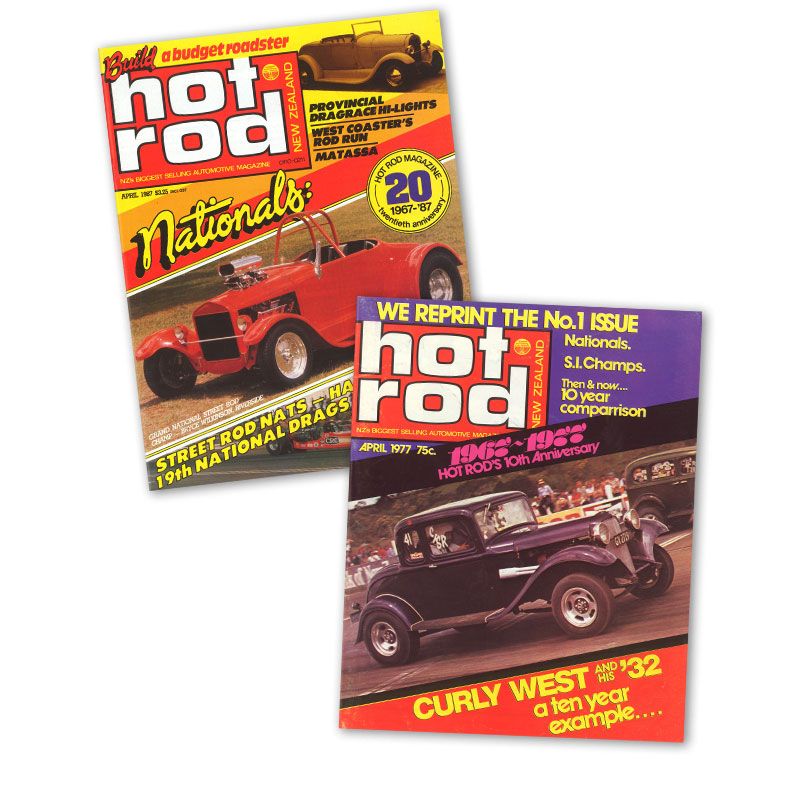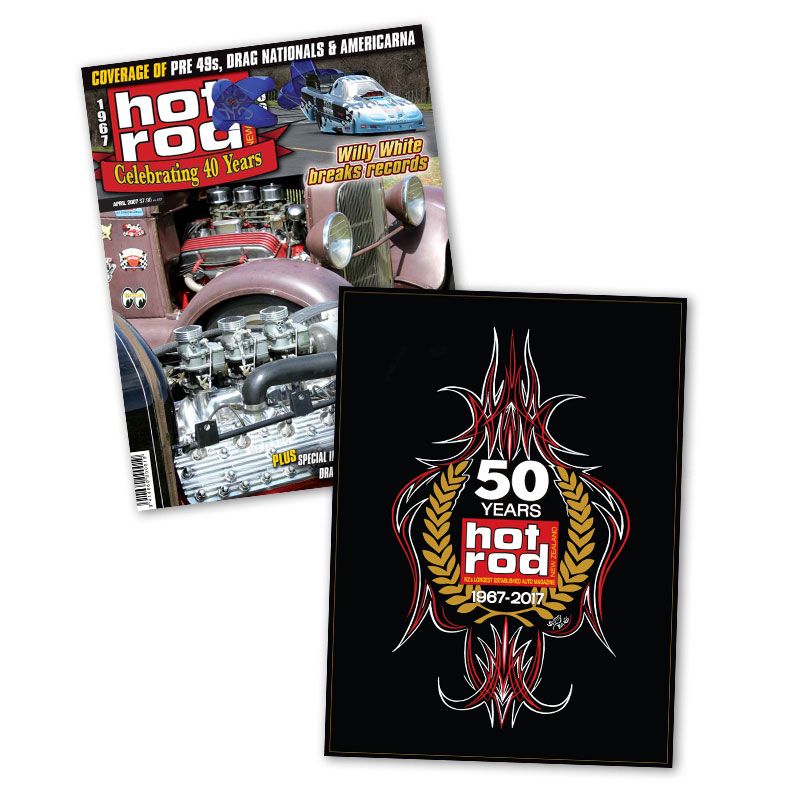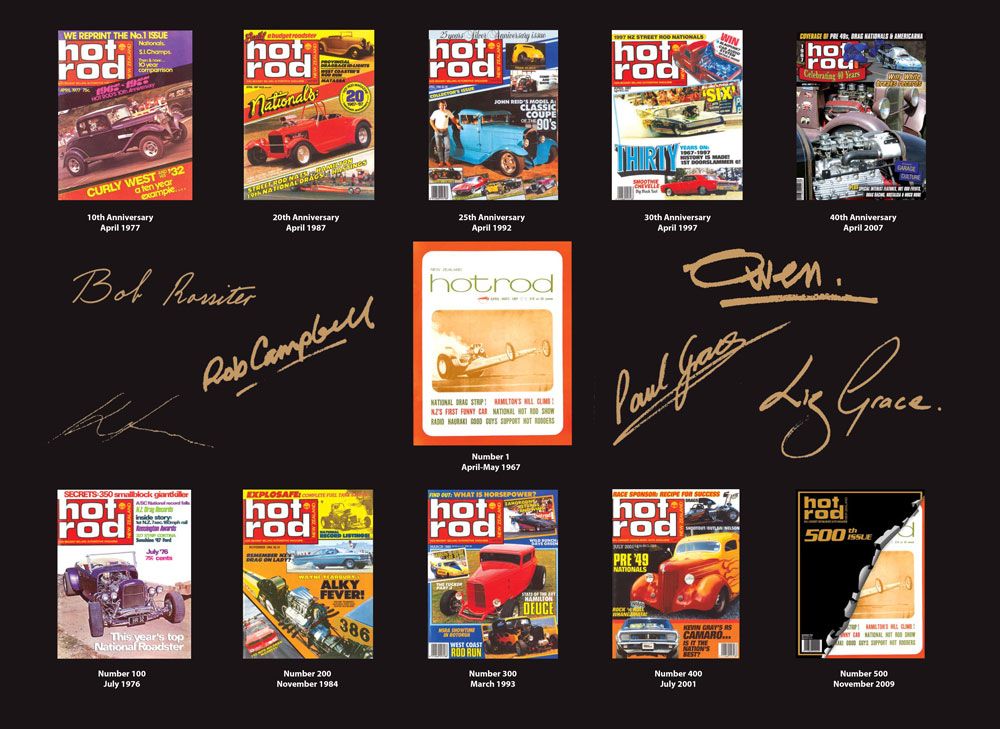The Magazine
His talents as a singer/ songwriter were demonstrated on a 45rpm record available exclusively to NZ Hot Rod readers in the Dec ‘75 issue. The Big ‘O’ rendition on brother Gene’s ‘Pink’ label even rated a mention in a book called, for the record - ‘A History of the Recording Industry in NZ’.

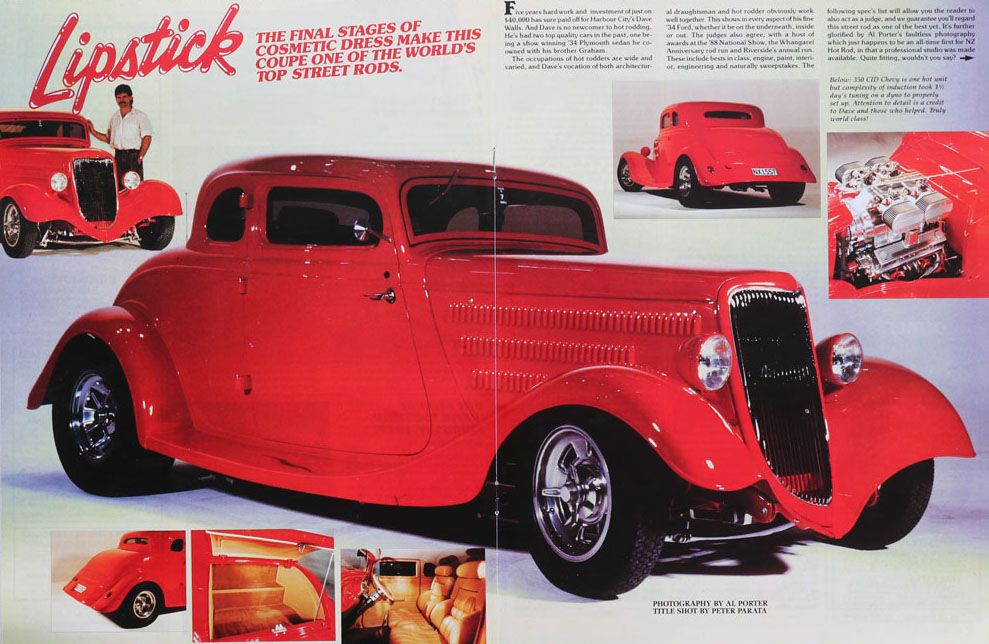
Allan Porter, east of Manurewa, was NZ’s first freelance official NZ Hot Rod mag photographer/ contributor. He was actually self-employed and contrary to popular belief was never an employee of the magazine. His car features would number in the hundreds but it’s his drag racing photography which has made him a legend. Allan was an early member of Auckland Hot Rod Club and was introduced to Rob at a club meeting as someone who could be of benefit to the new phenomenon of NZ’s first rod mag, just as issue number two went on sale. By August 1969 Allan was listed as a contributing photographer. His first published photo was actually in an early 1968 Car Craft mag, USA. What was it? Wild Thing. I asked if there was one photo he’d describe as his favourite: He was caught between two: His studio photo of Noddy Watt’s black Y-block T-bucket for Jan ‘90 issue, and Dave Walls’ 1934 Ford coupe in June ‘89 magazine. Mal Bain’s best photo without doubt was his action shot of Greg Taylor’s horrific accident in Ron Collett’s dragster, shot from a cherry-picker. The tumbling, spiralling rail went beneath him a half-second after the shot. It featured on HRM’s April ‘84 cover, made the front page of the NZ Herald and Reuters agency sent it around the world. Owen Campbell’s favourite cover was May ‘88 featuring the Pavlovich/ Piaggi T-bucket, and a close second was the May ‘86 cover showing Garth Hogan and an orange Willys coupe. Rob’s favourite is August ‘81 issue; a brave departure from the norm and the story behind the big question-mark ruffled a few feathers at the time! What about a car shot? It would be the Mustang on October ‘98 cover. Mal Bain’s association with NZ Hot Rod dates back to 1974 when he was a mechanic at Checker Motors in Newton Road close-by to the mag’s office. Through a common interest and knowing the magazine guys, he began taking photos at the drags with a Kodak 126. Some were published and he graduated to car features. He admits he didn’t know anything about cameras in those days, and his mentor was Allan Porter who obviously taught him a thing or two because he rose to the role of Chief Photographer.
It would be a hard task to mention all the correspondents who’ve contributed articles over the years. Their work reflects the different styles of writing and broad range of vehicles featured over the length and breadth of the country. Everyone likes to read about a car that resides at the opposite end to themselves, which they’ve never seen in the flesh. In fact it is one medium in which you have the opportunity of submitting an article which you think is worthy of publishing. Magazine editors are grateful for receiving this type of mail.
However there is one person who must be mentioned here. The most prolific correspondent, without a doubt, is Christchurch’s John Eva and this is an interesting story in itself. John has a full-time job yet still finds time to contribute to nearly every issue. His association with HRM goes back thirty years and this is how it came about: For a couple of years prior, John would bike 15 miles from home to the Ruapuna strip and take photos with his Box Brownie camera. The shots were mounted in an album and at the following meet he’d bike out and get the drivers to autograph the photos. He began to do the same with hot rods and one day Rob Kennard took him on a cruise around a few garages in his big block T-bucket... He was introduced to Rich Neale, who gave him his first assignment for HRM. That appeared in the March 1974 issue; John particularly likes doing profiles on people, and special interest topics such as his history of top chops in NZ. His story on Ron Collett in January 1991 issue is one of his favourites.
It would be a hard task to mention all the correspondents who’ve contributed articles over the years. Their work reflects the different styles of writing and broad range of vehicles featured over the length and breadth of the country. Everyone likes to read about a car that resides at the opposite end to themselves, which they’ve never seen in the flesh. In fact it is one medium in which you have the opportunity of submitting an article which you think is worthy of publishing. Magazine editors are grateful for receiving this type of mail.
However there is one person who must be mentioned here. The most prolific correspondent, without a doubt, is Christchurch’s John Eva and this is an interesting story in itself. John has a full-time job yet still finds time to contribute to nearly every issue. His association with HRM goes back thirty years and this is how it came about: For a couple of years prior, John would bike 15 miles from home to the Ruapuna strip and take photos with his Box Brownie camera. The shots were mounted in an album and at the following meet he’d bike out and get the drivers to autograph the photos. He began to do the same with hot rods and one day Rob Kennard took him on a cruise around a few garages in his big block T-bucket... He was introduced to Rich Neale, who gave him his first assignment for HRM. That appeared in the March 1974 issue; John particularly likes doing profiles on people, and special interest topics such as his history of top chops in NZ. His story on Ron Collett in January 1991 issue is one of his favourites.
The Columists
Throughout the magazine’s history there have been a number of people who had their own column, always listed under ‘departments’ on the contents page. Listed below are those people in order of appearance, starting from issue number seven to Mid 2004.
Message From Owen Campbell with his old mechanical typewriter:
I have typed and typed for over 30 years but there’s still some life left in me yet.
You’ll have to change the ribbon when the ink runs dry. It’s simple really, you will figure it out and I have left a box of spare ribbons for you. Remember to hit the W key three times ‘cos it’s worn down and the Y twice.
I might be old but I work bloody well when there’s a power cut.
You’ll have to change the ribbon when the ink runs dry. It’s simple really, you will figure it out and I have left a box of spare ribbons for you. Remember to hit the W key three times ‘cos it’s worn down and the Y twice.
I might be old but I work bloody well when there’s a power cut.
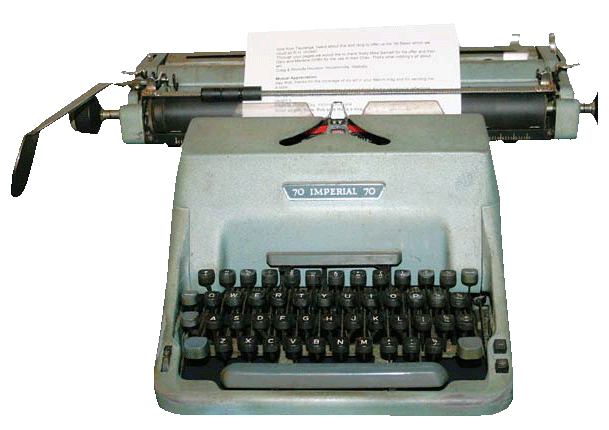
Hot Rod Publishing Ltd
P O Box 8
Waipu 0545
New Zealand
Waipu 0545
New Zealand
09 432 1270
This email address is being protected from spambots. You need JavaScript enabled to view it.
